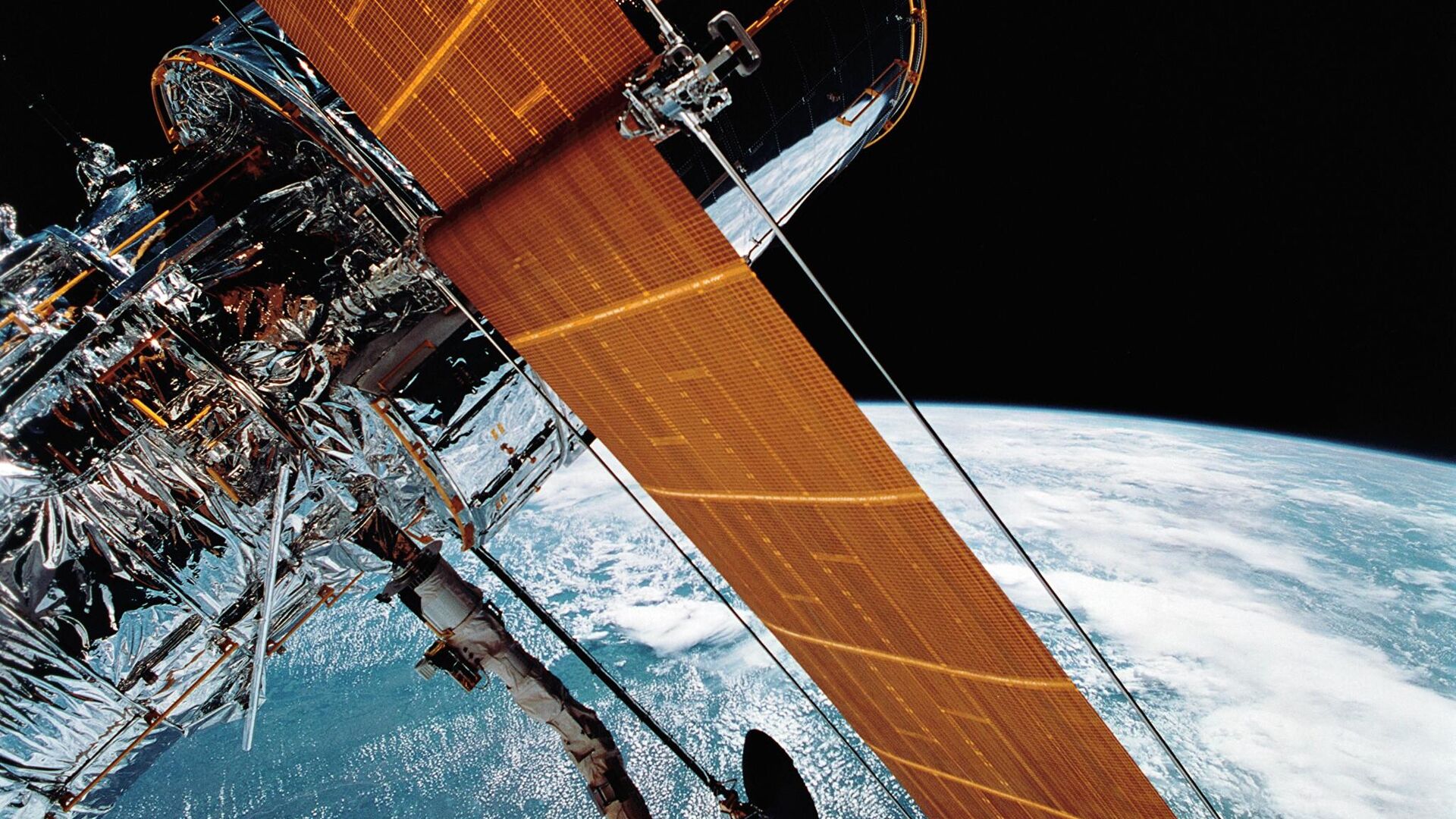https://sputnikglobe.com/20220930/nasa-spacex-launch-feasibility-study-to-give-hubble-telescope-longer-life---officials-1101359472.html
NASA, SpaceX Launch Feasibility Study to Give Hubble Telescope Longer Life - Officials
NASA, SpaceX Launch Feasibility Study to Give Hubble Telescope Longer Life - Officials
Sputnik International
WASHINGTON (Sputnik) - NASA and SpaceX are going to conduct a feasibility study on the possibility of boosting the Hubble Space Telescope 40 to 45 miles higher... 30.09.2022, Sputnik International
2022-09-30T01:20+0000
2022-09-30T01:20+0000
2022-09-30T01:20+0000
science & tech
nasa
spacex
hubble telescope
study
https://cdn1.img.sputnikglobe.com/img/07e5/0c/09/1091379120_0:448:2049:1600_1920x0_80_0_0_b731d768e0558571a1b6ee7bd29234ec.jpg
"The idea is of a commercial crew to boost Hubble into a higher orbit," NASA Science Mission Directorate Associate Administrator Thomas Zurbuchen said on Thursday. "We have signed an agreement that we announce today to do [a feasibility study] on that."NASA and SpaceX signed their unfunded Space Act Agreement on September 22, the space agency said in a blog on Thursday. The two organizations will now conduct a feasibility study on boosting the Hubble Telescope, which was launched in 1990, into a higher orbit with the Dragon spacecraft, at no cost to the US government."SpaceX and the Polaris Program want to expand the boundaries of current technology and explore how commercial partnerships can creatively solve challenging, complex problems. Missions, such as servicing Hubble, would help us expand space capabilities to ultimately help all of us achieve our goals of becoming a space-faring, multiplanetary civilization," SpaceX Vice President of Customer Operations and Integration Jessica Jensen said.Teams expect the study to take up to six months, collecting technical data from both Hubble and the SpaceX Dragon spacecraft, NASA said in the blog.The Hubble's original orbit was 380 miles or 600 kilometers above the ground but over the years it has decayed to 335 miles above the earth, NASA said. Currently, three is a 50% probability that Hubble will fall back to earth 15 years from now in 2037 if its orbit is not boosted before then, NASA added.
Sputnik International
feedback@sputniknews.com
+74956456601
MIA „Rossiya Segodnya“
2022
Sputnik International
feedback@sputniknews.com
+74956456601
MIA „Rossiya Segodnya“
News
en_EN
Sputnik International
feedback@sputniknews.com
+74956456601
MIA „Rossiya Segodnya“
Sputnik International
feedback@sputniknews.com
+74956456601
MIA „Rossiya Segodnya“
science & tech, nasa, spacex, hubble telescope, study
science & tech, nasa, spacex, hubble telescope, study
NASA, SpaceX Launch Feasibility Study to Give Hubble Telescope Longer Life - Officials
WASHINGTON (Sputnik) - NASA and SpaceX are going to conduct a feasibility study on the possibility of boosting the Hubble Space Telescope 40 to 45 miles higher in its low earth orbit (LEO) to give it an additional period of life, senior agency and company officials told a podcast press conference.
"The idea is of a commercial crew to boost Hubble into a higher orbit," NASA Science Mission Directorate Associate Administrator Thomas Zurbuchen said on Thursday. "We have signed an agreement that we announce today to do [a feasibility study] on that."
NASA and SpaceX signed their unfunded Space Act Agreement on September 22, the space agency said in a blog on Thursday. The two organizations will now conduct a feasibility study on boosting the Hubble Telescope, which was launched in 1990, into a higher orbit with the Dragon spacecraft, at no cost to the US government.
"SpaceX and the Polaris Program want to expand the boundaries of current technology and explore how commercial partnerships can creatively solve challenging, complex problems. Missions, such as servicing Hubble, would help us expand space capabilities to ultimately help all of us achieve our goals of becoming a space-faring, multiplanetary civilization," SpaceX Vice President of Customer Operations and Integration Jessica Jensen said.
Teams expect the study to take up to six months, collecting technical data from both Hubble and the SpaceX Dragon spacecraft, NASA said in the blog.
The Hubble's original orbit was 380 miles or 600 kilometers above the ground but over the years it has decayed to 335 miles above the earth, NASA said. Currently, three is a 50% probability that Hubble will fall back to earth 15 years from now in 2037 if its orbit is not boosted before then, NASA added.

